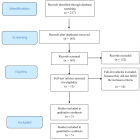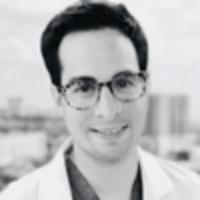Abstract
Review Article
Avermectins: The promising solution to control plant parasitic nematodes
Mohamed S Khalil* and Dalia M Darwesh
Published: 13 September, 2019 | Volume 3 - Issue 3 | Pages: 081-085
Abamectin and emamectin are members of avermectin family which categorized as very effective but in the same time are toxic naturally. Most of products in this family are utilized as pharmaceuticals in both humans & animals and for crop protection. Despite avermectins are having complex chemical structures, but they are produced via synthesis in large scales for commercial use. Plant parasitic nematodes (PPNs) cause severe damages in all parts of their host plants, in addition to yield losses. The available strategies to control PPN include use of insecticides/nematicides but these have proved detrimental to environment and human health. Therefore, this scenario gave an opportunity for the utilization of avermectins (abamectin and emamectin) to control plant parasitic nematodes because of their chemical and biological properties, as well as relative safety. Avermectins have short half-lives and their residues can be eliminated easily through different food processing methods. Both abamectin and emamectin were very effective nematicides which proved capability of reducing PPNs significantly in various crops.
Read Full Article HTML DOI: 10.29328/journal.jpsp.1001036 Cite this Article Read Full Article PDF
References
- Elling AA. Major emerging problems with minor Meloidogyne species. Phytopathology. 2013; 103: 1092-1102. PubMed: https://www.ncbi.nlm.nih.gov/pubmed/23777404
- Hugot JP, Baujard P, Morand S. Biodiversity in helminths and nematodes as a field of study: an overview. Nematology. 2001; 3:199-208.
- Nicol JM, Turner SJ, Coyne DL, den Nijs L, Hockand S, et al. Current nematode threats to world agriculture. In: Jones J, Gheysen G, Fenoll C (eds) Genomics and molecular genetics of plant-nematode interactions. Springer Dordrecht. 2011; 21-43.
- Khalil MS, Darwesh DM. Some integrated practices to manage root-knot nematodes on tomatoes: A Mini Review. Innovative Techniques in Agriculture. 2018; 3: 618-625.
- Jansson RK, Rabatin S. Potential of foliar, dip, and injection applications of avermectins for control of plant-parasitic nematodes. J Nematol. 1998; 30: 65-75. PubMed: https://www.ncbi.nlm.nih.gov/pmc/articles/PMC2620280/
- Cabrera JA, Kiewnick S, Grimm C, Dababat AA, Sikora RA. Efficacy of abamectin seed treatment on Pratylenchus zeae, Meloidogyne incognita and Heterodera schachtii. J Plant Dis Prot. 2009; 116: 124-128.
- Ibrahim IKA, Basyony ABA, Handoo ZA, Chitwood DJ. Pathogenicity and control of Heterodera schacht and Meloidogyne spp. on some cruciferous plant cultivars. Inte J Nematol. 2013; 23: 73-81.
- Bi Z, Gong Y, Huang X, Yu H, Bai L, et al. Efficacy of Four Nematicides against the Reproduction and Development of Pinewood Nematode, Bursaphelenchus xylophilus. 2015; J Nematol. 47: 126-132. PubMed: https://www.ncbi.nlm.nih.gov/pubmed/26170474
- El-Tanany MM, El-Shahaat MS, Khalil MS. Efficacy of three bio-pesticides and oxamyl against citrus nematode (Tylenchulus semipenetrans) and on productivity of Washington navel orange trees. Egyptian J Horticulture. 2018; 45: 275-287.
- Khalil MS, Alqadasi AAA. Potential of non-fumigant nematicides at different formulations against southern root-knot nematode (Meloidogyne incognita) on tomato plants. Int J Phytopathol. 2019; 8: 23-28.
- Fisher MH. Recent advances in avermectin research. Pure Appl Chem. 1990; 62: 1231-1240.
- Khalil MS, Abd El-Naby SSI. The integration efficacy of formulated abamectin, Bacillus thuringiensis and Bacillus subtilis for managing Meloidogyne incognita (Kofoid and White) Chitwood on tomatoes. J Biopesticides. 2018; 11: 146-153.
- Feely WF, Crouch LS, Arison BH, VandenHeuvel WJA, Colwell LF, et al. Photodegradation of 4''-(epi-methylamino)-4''-deoxyavermectin B1a thin films on glass. J Agric Food Chem. 1992; 40: 691-696.
- Zhu JY, He M, Gao W, Zhou J, Hu J, et al. Photodegradation of emamectin benzoate and its influence on efficacy against the rice stem borer, Chilo suppressalis. Crop Protection. 2011; 30: 1356-1362.
- Pitterna T, Cassayre J, Hüter OF, Jung PM, Maienfisch P, et al. New ventures in the chemistry of avermectins. Bioorg Med Chem. 2009; 17: 4085-4095. PubMed: https://www.ncbi.nlm.nih.gov/pubmed/19168364
- Khalil MS. Abamectin and azadirachtin as eco-friendly promising biorational tools in integrated nematodes management programs. J Plant Pathol Microb. 2013; 4: 174.
- Boina DR, Onagbola EO, Salyani M, Stelinski LL. Influence of posttreatment temperature on the toxicity of insecticides against Diaphorina citri (Hemiptera: Psyllidae). J Econ Entomol. 2009; 102: 685-691. PubMed: https://www.ncbi.nlm.nih.gov/pubmed/19449650
- Wright DJ, Loy A, Green ASJ, Daybas RA. The translaminar activity of abamectin (MK-936) against mites and aphids. Meded Fac. Land bouwwet. Rijks Univ Gent. 1985; 50: 633e637.
- Bull DL, Ivie W, MacDonnel JG, Gruber VF, Ku CC, et al. Fate of avermectin B1a in soil and plants. J Agric Food Chem. 1984; 32: 94-102.
- Chukwudebe AC, Feely WF, Burnett TJ, Crouch LS, Wislocki PG. Uptake of emamectin benzoate residues from soil by rotational crops. J Agric Food Chem. 1996; 44: 4015-4021.
- Dybas RA, Green ASJ. Avermectins: their chemistry and pesticidal activity. British Crop Protection Conference. Pest and Diseases, 1984, 9B- 3: 947-954.
- Lumaret JP, Errouissi F, Floate K, Römbke J, Wardhaugh K. A Review on the Toxicity and Non-Target Effects of Macrocyclic Lactones in Terrestrial and Aquatic Environments. Current Pharmaceutical Biotechnology, 2012; 13: 1004-1060.
- Radwan MA, Saad ASA, Mesbah HA, Ibrahim HS, Khalil MS. Investigating the In vitro and In vivo nematicidal performance of structurally related macrolides against the root-knot nematode, Meloidogyne incognita. Hellenic Plant Protection Journal. 2019; 12: 24-37.
- Abdallah EAM, Abdelgalil GM, Kassem FA, Asran AA, Abou-Elnasser HS. Comparative molluscicidal activity of abamectin and methomyl against Eobania vermiculata (Muller) and Theba pisana (Muller). J Plant Prot and Path Mansoura Univ. 2015; 6: 1671-1683.
- Abdelgalil GM. Molluscicidal activity and biochemical studies of some pesticides against terrestrial snails. Ph. D. Thesis of Agric. Faculty. Alex. Univ. Egypt. 2016.
- Abdelgalil GM, Abou-Elnasr HS, Khalil MS, Abouhamer MS, Osman AM, et al. Molluscicidal toxicity of abamectin against Eobania vermiculata and Theba pisana in vitro and the estimation of GABA-Transaminase activity by HPLC. J Biopesticides. 2018; 11:161-168.
- Mushtaq M, Chukwudebe AC, Wrzesinski C, Allen LRS, Luffer-Atlas D, et al. Photodegradation of emamectin benzoate in aqueous solution. J Agric Food Chem. 1998; 46: 1181-1191.
- Cvetovich RJ, Kelly DH, Di Michele LM, Shuman RF, Grabowski EJJ. Synthesis of 4"- epi-amino-4"-deoxyavermectins B1. J Organic Chemistry. 1994; 59: 7704-7708.
- Aatif HM, Javed N, Ullah MI, Lali SP, Iqbal Z, et al. Biological management of Meloidogyne incognita using entomopathogenic bacterial cell suspensions with other bioproducts in egg plant. Pak J Zool. 2016; 48: 887-890.
- Khalil MS. Evaluation of some management practices against root knot nematode in tomato. PhD. thesis, Alexandria University, Alexandria, Egypt, 2018; 174.
- Jansson RK, Dybas RA. Avermectins: biochemical mode of action, biological activity and agricultural importance, pp. 153e170. In: Ishaaya, I., Degheele, D. (Eds.), Insecticides with Novel Modes of Actiondmechanisms and Application. Springer, Berlin, Heidelberg, New York. 1998.
- Birtle AJ, Crops AE, Wright DJ. Biological effects of avermectins on nematodes. XVIth international Symposium of Nematology. St. Andrews, (Abstr.). 1982; 75.
- Zhou L, Luo F, Zhang X, Jiang Y, Lou Z, et al. Dissipation, transfer and safety evaluation of emamectin benzoate in tea. Food Chemistry. 2016; 202: 199-204. PubMed: https://www.ncbi.nlm.nih.gov/pubmed/26920285
- Han PJ, Fan RJ, Feng YT, Du EQ, Zhao RH. Control efficacy of 2.2% emamectin benzoate ME against rice stem borer (Chilo suppressalis). J Southern Agri. 2011; 42: 403-405.
- Shang Q, Y Shi, Y Zhang, T Zheng, H Shi. Pesticide conjugated polyacrylate nanoparticles: novel opportunities for improving the photostability of emamectin benzoate. Polymers for Advanced Technologies. 2013; 24: 137-143.
- Guo M, Zhang W, Ding G, Guo D, Zhu J, et al. Preparation and characterization of enzyme-responsive emamectin benzoate microcapsules based on a copolymer matrix of silica-epi chlorohydrin carboxy methylcellulose. RSC Advances. 2015; 5: 93170- 93179.
- Mushtaq M, Feely WF, Syintsakos LR, Wislocki PG. Immobility of emamectin benzoate in soils. J Agric Food Chem. 1996: 44: 940-944.
- Feely WF, Crouch LS, Arison BH, VandenHeuvel WJA, Colwell LF, et al. Photodegradation of 400-(epi-methylamino)-400-deoxyavermectin B1a thin films on glass. J Agric Food Chem. 1992; 40: 691- 696.
- Wrzesinski CL, Arison BH, Smith J, Zink DL, VandenHeuvel WJA. Isolation and identification of residues of 400-(epi-methylamino)-400-deoxyavermectin B1a benzoate from the surface of cabbage. J Agric Food Chem. 1996; 44: 304-312.
- Crouch LS, Feely WF. Fate of [14C] Emamectin benzoate in head lettuce. J Agric Food Chem. 1995; 43: 3075-3087.
- Abbas W, Anwar SA, Zia A, Javed N. Response of four tomato cultivars to Meloidogyne incognita infection and its chemical management. Pak J Nematol. 2008; 26: 37-43.
- Korayem AM, Mahmoud MAY, Moawad MMM. Effect of chitin and abamectin on Meloidogine incognita infesting rape seed. J Plant Protection Res. 2008; 48: 365-370.
- Shahid M, Rehman AU, Khan SH, Mahmood K, Khan AU. Management of root-knot nematode infecting brinjal by biopesticides, chemicals, organic amendments and bio-control agent. Pak J Nematol. 2009; 27: 159-166.
- Khalil MS. A comparison study with alternative biorational agents to suppress the root-knot nematode populations and gall-formation in tomato plants. Inte J Nematol. 2012; 22: 112-116.
- Youssef MMA, Lashein AMS. Effect of some commercial biofertilizers and a biocide on root knot nematode, Meloidogyne incognita infesting date palm in a newly reclaimed soil in Egypt. Middle East J App Sci. 2015; 5:143-147.
- Saad ASA, Radwan MA, Mesbah HA, Ibrahim HS, Khalil MS. Evaluation of some non-fumigant nematicides and the biocide avermectin for managing Meloidogyne incognita in tomatoes. Pakistan Journal of Nematology. 2017; 35: 85-92.
- Rehman AU, Javed N, Ahmad R, Shahid M. Integration of bio-products and Pasteuria penetrans for the management of root-knot Nematode over three crop cycles of tomato. Pak J Nematol. 2009; 27: 325-336.
- Cheng X, Liu X, Wang H, Ji X, Wang K, et al. Effect of emamectin benzoate on root-knot nematodes and tomato yield. PLoS One 2015; 10: e0141235. PubMed: https://www.ncbi.nlm.nih.gov/pmc/articles/PMC4624971/
Figures:

Figure 1

Figure 2
Similar Articles
-
Impact of Calcium Phosphate Nanoparticles on Rice PlantHrishikesh Upadhyaya*,Lutfa Begum,Bishal Dey,P K Nath,S K Panda. Impact of Calcium Phosphate Nanoparticles on Rice Plant. . 2017 doi: 10.29328/journal.jpsp.1001001; 1: 001-010
-
The Effects of Pharmacological Carbonic Anhydrase Suppression on Defence Responses of Potato Leaves To Phytophthora InfestansMagdalena Arasimowicz-Jelonek*,Jolanta Floryszak-Wieczorek. The Effects of Pharmacological Carbonic Anhydrase Suppression on Defence Responses of Potato Leaves To Phytophthora Infestans. . 2017 doi: 10.29328/journal.jpsp.1001002; 1: 011-025
-
Phytochemical content of leaf and stem of Marsilea quadrifolia (L.)Rajangam Udayakumar*,Karikalan Gopalakrishnan. Phytochemical content of leaf and stem of Marsilea quadrifolia (L.). . 2017 doi: 10.29328/journal.jpsp.1001003; 1: 026-037
-
Antagonistic features displayed by Plant Growth Promoting Rhizobacteria (PGPR): A ReviewMohsin Tariq*,Muhammad Noman,Temoor Ahmed,Amir Hameed,Natasha Manzoor,Marriam Zafar. Antagonistic features displayed by Plant Growth Promoting Rhizobacteria (PGPR): A Review . . 2017 doi: 10.29328/journal.jpsp.1001004; 1: 038-043
-
Wild-type Agrobacterium rhizogenes-mediated gene transfer in plants: Agrobacterium virulence and selection of transformantsShu Wei*,Muhammad Abdullah,Ferdinand L Shamalla,Mohammad M Rana. Wild-type Agrobacterium rhizogenes-mediated gene transfer in plants: Agrobacterium virulence and selection of transformants. . 2017 doi: 10.29328/journal.jpsp.1001005; 1: 044-051
-
Effects of Vochysia haenkeana extract on the neuromuscular blockade induced by Bothrops jararaca venom on chick biventer cervicis preparation in vitroYoko Oshima-Franco*,Fernanda Dias da Silva,Natália Tribuiani,Isadora Caruso Fontana Oliveira,Regina Yuri Hashimoto Miura,Rafael S Floriano,Márcio Galdino dos Santos,Sandro Rostelato-Ferreira. Effects of Vochysia haenkeana extract on the neuromuscular blockade induced by Bothrops jararaca venom on chick biventer cervicis preparation in vitro. . 2017 doi: 10.29328/journal.jpsp.1001006; 1: 052-058
-
HBV: Genomic Structure, HBVsAg Isolation and innovative Virotherapy Initiation in the Middle EastAboul-Ata E Aboul-Ata*,Essam M Janahi,I M El-Kalamawy,Kathleen Hefferon,Amal Mahmoud. HBV: Genomic Structure, HBVsAg Isolation and innovative Virotherapy Initiation in the Middle East . . 2017 doi: 10.29328/journal.jpsp.1001007; 1: 059-061
-
Physiological impact of Zinc nanoparticle on germination of rice (Oryza sativa L) seedUpadhyaya H*,Roy H,Shome S,Tewari S,Bhattacharya MK,Panda SK. Physiological impact of Zinc nanoparticle on germination of rice (Oryza sativa L) seed . . 2017 doi: 10.29328/journal.jpsp.1001008; 1: 062-070
-
Effects of Site Factors on the Clonal Growth of Phyllostachys bambusoides f. shouzhu YiXiaohong Gan*,Lijuan Chen,Cuibin Tang,Xia Zhang. Effects of Site Factors on the Clonal Growth of Phyllostachys bambusoides f. shouzhu Yi. . 2017 doi: 10.29328/journal.jpsp.1001009; 1: 071-079
-
Evaluation of genetic diversity in germplasm of paprika (Capsicum spp.) using random amplified polymorphic DNA (RAPD) markersRueda-Puente EO*,Renganathan P,Ruíz-Alvarado C,Hernández-Montiel LG,Prasath Duraisamy. Evaluation of genetic diversity in germplasm of paprika (Capsicum spp.) using random amplified polymorphic DNA (RAPD) markers. . 2017 doi: 10.29328/journal.jpsp.1001010; 1: 080-086
Recently Viewed
-
Association Between Electrocardiographic Abnormalities and In-Hospital Adverse Outcome in COVID-19 PatientsAnjuman Begum*, Wadud Chowdhury, Suman KS, Arnab KC, Md. Akteruzzaman, Barua Sushanta. Association Between Electrocardiographic Abnormalities and In-Hospital Adverse Outcome in COVID-19 Patients. J Cardiol Cardiovasc Med. 2024: doi: 10.29328/journal.jccm.1001196; 9: 148-152
-
Texture of Thin Films of Aluminum Nitride Produced by Magnetron SputteringStrunin Vladimir Ivanovich,Baranova Larisa Vasilievna*,Baisova Bibigul Tulegenovna. Texture of Thin Films of Aluminum Nitride Produced by Magnetron Sputtering. Int J Phys Res Appl. 2025: doi: 10.29328/journal.ijpra.1001106; 8: 013-016
-
Prevalence and Correlation between HbA1c Control and Duration of Diabetes with Blindness in the Eastern Part of Libya: Double Centers StudyKhalid AK Elmajri*, Abdolmejed Fathy. Prevalence and Correlation between HbA1c Control and Duration of Diabetes with Blindness in the Eastern Part of Libya: Double Centers Study. Int J Clin Exp Ophthalmol. 2024: doi: 10.29328/journal.ijceo.1001058; 8: 021-025
-
Reliability and Diagnostic Performance of Transient Hepatic Elastography in Chronic Hepatitis C during the Training PhaseAppel F*, Ercolin S, Monteiro MM, Lomes N, Uehara S, Emori CT, Nunes EJS, El Bacha I, Oliveira AC, Feldner ACCA, Silva ISS, Silva AEB, Ferraz MLG, Parise ER, Carvalho-Filho RJ. Reliability and Diagnostic Performance of Transient Hepatic Elastography in Chronic Hepatitis C during the Training Phase. Ann Clin Gastroenterol Hepatol. 2024: doi: 10.29328/journal.acgh.1001047; 8: 021-027
-
Budesonide – Oral Galenic Formulations for Crohn DiseaseLuisetto M, Mashori GR, Cabianca L, Latyshev OYU. Budesonide – Oral Galenic Formulations for Crohn Disease. Ann Clin Gastroenterol Hepatol. 2024: doi: 10.29328/journal.acgh.1001048; 8: 028-033
Most Viewed
-
Evaluation of Biostimulants Based on Recovered Protein Hydrolysates from Animal By-products as Plant Growth EnhancersH Pérez-Aguilar*, M Lacruz-Asaro, F Arán-Ais. Evaluation of Biostimulants Based on Recovered Protein Hydrolysates from Animal By-products as Plant Growth Enhancers. J Plant Sci Phytopathol. 2023 doi: 10.29328/journal.jpsp.1001104; 7: 042-047
-
Sinonasal Myxoma Extending into the Orbit in a 4-Year Old: A Case PresentationJulian A Purrinos*, Ramzi Younis. Sinonasal Myxoma Extending into the Orbit in a 4-Year Old: A Case Presentation. Arch Case Rep. 2024 doi: 10.29328/journal.acr.1001099; 8: 075-077
-
Feasibility study of magnetic sensing for detecting single-neuron action potentialsDenis Tonini,Kai Wu,Renata Saha,Jian-Ping Wang*. Feasibility study of magnetic sensing for detecting single-neuron action potentials. Ann Biomed Sci Eng. 2022 doi: 10.29328/journal.abse.1001018; 6: 019-029
-
Pediatric Dysgerminoma: Unveiling a Rare Ovarian TumorFaten Limaiem*, Khalil Saffar, Ahmed Halouani. Pediatric Dysgerminoma: Unveiling a Rare Ovarian Tumor. Arch Case Rep. 2024 doi: 10.29328/journal.acr.1001087; 8: 010-013
-
Physical activity can change the physiological and psychological circumstances during COVID-19 pandemic: A narrative reviewKhashayar Maroufi*. Physical activity can change the physiological and psychological circumstances during COVID-19 pandemic: A narrative review. J Sports Med Ther. 2021 doi: 10.29328/journal.jsmt.1001051; 6: 001-007

HSPI: We're glad you're here. Please click "create a new Query" if you are a new visitor to our website and need further information from us.
If you are already a member of our network and need to keep track of any developments regarding a question you have already submitted, click "take me to my Query."
















































































































































